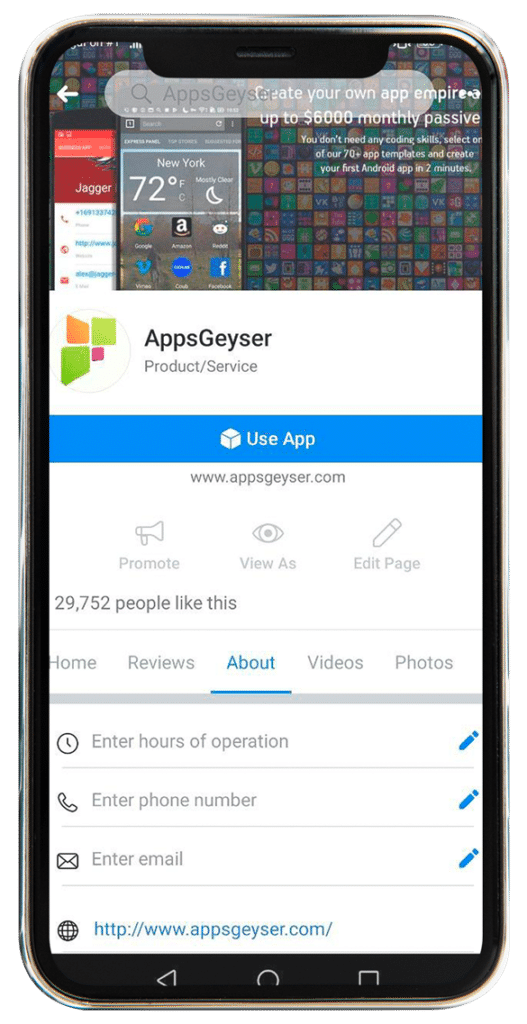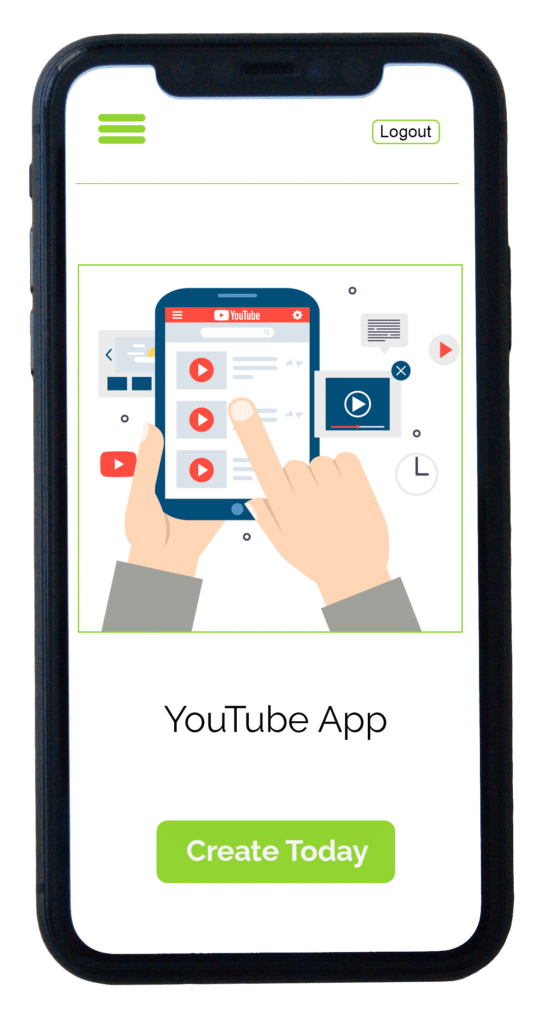Table of contents
- Understanding the Importance of User Onboarding
- Identifying Your Target Users and Their Needs
- Cost-Effective Strategies for User Engagement
- Utilizing Appsgeyser for Easy and Affordable App Creation
- Designing an Effective User Onboarding Experience with Appsgeyser
- Monitoring User Engagement and Feedback
- Adjusting Your Strategy Based on User Feedback
- Case Study: Successful Onboarding Experiences Using Appsgeyser
Introduction
The onboarding process is a crucial stage in the user’s journey with an Android application. It goes beyond simply guiding users through app features and focuses on illustrating the unique benefits the app delivers. Effective user onboarding can significantly boost user engagement and retention, ultimately leading to the success of the app. In this article, we will explore the importance of user onboarding, strategies for designing an effective onboarding experience, and cost-effective approaches to engage users. We will also discuss how AppsGeyser, a user-friendly platform for app creation, can be utilized to create captivating onboarding experiences and monitor user engagement and feedback. By implementing these strategies, entrepreneurs can optimize their app’s onboarding process and drive user satisfaction and engagement
1. Understanding the Importance of User Onboarding
The initiation of a user’s journey with your Android application is the onboarding process, a crucial stage that lays the groundwork for their total engagement. This process goes beyond merely guiding users through the app’s features. It’s about strategically illustrating the unique benefits your application delivers, which can significantly boost user engagement and retention, ultimately leading to your app’s success.
Consider Dropbox’s onboarding process, an exemplary model of both informative and engaging, with user-friendly file-sharing features and appealing illustrations, ensuring an incredibly straightforward user experience. Netflix’s onboarding approach is another excellent example, offering a free 30-day trial and guiding users to add a payment method. Canva offers a personalized onboarding experience, where users are asked their intent for using the app, and based on their responses, they are provided a tailored, enjoyable video tutorial.
The importance of immediately demonstrating your app’s value cannot be overstated. This helps build a lasting relationship with users. Apps like Twitter, Yubo, and Tasty, for instance, make ambitious promises and set clear expectations from the get-go, exciting users about the app’s offerings. Successful apps like TikTok, Shine, and Etsy prompt users to perform key actions early, helping them experience the app’s worth and remain engaged.
For budget-conscious entrepreneurs, it is vital to obtain a maximum return on investment. An effective and user-friendly onboarding process can be a cost-effective strategy to achieve this. It requires providing clear instructions, breaking down the process into small, manageable steps, and continuously refining the process based on user feedback. Showcasing your app’s value during onboarding through informative tutorials, interactive demos, or step-by-step guides can increase user engagement and retention.
The success of your app’s onboarding process can be measured by analyzing user engagement metrics like app downloads, active users, retention rates, and user feedback. Monitoring these metrics will help identify areas for improvement and enable you to optimize your app’s onboarding process, ensuring a seamless and successful user experience. Implementing effective onboarding strategies that guide users through your product’s key features and benefits, providing personalized recommendations based on user preferences, and regularly collecting user feedback can optimize user retention
2. Identifying Your Target Users and Their Needs
Crafting a user onboarding experience that resonates with your audience stems from understanding their unique needs. This process involves thorough user research, demographic trend analysis, and pinpointing the hurdles your users encounter. With a comprehensive understanding of your user base, you can mold the onboarding process to meet their needs, thereby boosting user engagement, satisfaction, and making your application an essential tool for your audience.
A constructive way to comprehend your target users is by exploiting personal networks or professional platforms for market research and identifying potential users for interviews. This approach can uncover invaluable insights into user preferences and challenges. Equally important is to engage your existing users for feedback, as they can offer first-hand information about the user experience and areas for enhancement.
Moreover, user sourcing can be broadened to conferences, meetups, and online communities where potential users gather. Such avenues provide a plethora of opportunities for face-to-face interviews and interactions, resulting in valuable insights. Building a customer community can also be advantageous. It not only fortifies the relationship with users but also encourages constant feedback and insights.
In the B2B realm, sourcing users for interviews can be a daunting task. However, platforms like Centercode offer scalable, automated solutions for user testing, which can revolutionize the process. Centercode‘s software enables the formation of persona teams and the assignment of testers based on those personas, thereby helping prioritize feedback and gain a precise overview of each team’s feedback throughout the test. This method can dramatically improve the user onboarding experience, making your application more attractive to your target audience.
To further tailor the onboarding process, consider offering customization options during the setup phase, such as language, theme, or layout choices. A variety of onboarding paths or tutorials can cater to different learning styles and preferences. Clear and concise instructions, along with interactive elements like tooltips or guided tours, can help users navigate the onboarding process effectively. This personalization enhances user satisfaction and engagement. A potential solution for a more personalized onboarding experience could be creating a customized browser app using platforms like AppsGeyser, which offers tools and resources for creating tailored browser apps
3. Cost-Effective Strategies for User Engagement
Creating a compelling user onboarding experience need not be a drain on resources. There are many cost-effective strategies that can effectively engage users. Interactive walkthroughs, in-app guidance, and custom content are just a few examples. These tactics can create a smooth onboarding journey, encouraging users to explore and regularly engage with your app.
User onboarding is the first encounter a user has with an app. It stretches from their initial interaction to the moment they grasp the app’s value. This process is particularly crucial for companies operating on a freemium or free trial revenue model. It’s reported that 40-60% of new users for such products only sign up once and never return, underlining the importance of a well-executed onboarding process.
The primary goal of user onboarding is to help users discover the core value of the app and use it regularly. This involves understanding your users, customizing the onboarding experience based on their data, delivering quick wins early on, paving the way to ‘aha’ moments, re-engaging users through emails or push notifications, and utilizing in-app guides. It’s crucial not to overwhelm users with too much information.
Platforms like AppsGeyser can be used to create in-app guides for user onboarding. By creating a browser app or a messenger app, you can include features that guide users through the onboarding process. These could be step-by-step instructions, tooltips, or pop-up messages that help users understand how to navigate and use your app effectively.
User onboarding is an ongoing process, and it’s important to continuously refine and enhance the onboarding experience based on user feedback and data analysis. By implementing these cost-effective strategies, you can provide a seamless user onboarding experience, encouraging users to explore and use your app regularly
Try Appsgeyser for free and create a captivating user onboarding experience for your app!
4. Utilizing Appsgeyser for Easy and Affordable App Creation
Andromo’s reputation as a go-to platform for app creation is well-deserved. It offers a multitude of features, from audio and video to maps and surveys, that make the process of creating professional Android and iOS apps straightforward. Its unique selling point is its ability to transform Shopify or WooCommerce stores into native mobile apps, a feature that business owners aiming to penetrate the mobile market will find particularly useful.
In addition to its app creation capabilities, Andromo also offers monetization options. These include content-related ads, sponsored content, and in-app purchases, providing entrepreneurs with numerous avenues to generate revenue. With a strong presence in Asia, Africa, and North America, and over 70 million active users worldwide, Andromo’s decade-long experience in the field is evident.
Meanwhile, Adalo offers a no-code platform for building custom responsive apps. It is known for its premium components, app templates, and industry-specific solutions, catering to sectors including fitness, social media, messaging, subscription services, food ordering, and ecommerce. Its intuitive visual designer and flexible database options make the app building process a breeze.
However, AppsGeyser presents another alternative for app creation. Like Andromo and Adalo, AppsGeyser offers a user-friendly platform with a variety of app customization options. From creating browser apps to converting websites into mobile apps, AppsGeyser provides the tools to create and customize your own app. It also offers a step-by-step guide to publishing an Android app, along with a help center with resources and suggestions to assist users in the app creation process.
Whether you choose Andromo, Adalo, or AppsGeyser, each platform offers ease of use, creative freedom, and time-saving capabilities, all while prioritizing user experience and offering resources and support for effective app creation and monetization
5. Designing an Effective User Onboarding Experience with Appsgeyser
AppsGeyser provides a platform for crafting a captivating user onboarding experience, keeping users engaged from their first interaction with your application. The platform offers multiple features that enable the creation of a personalized and immersive onboarding process.
AppsGeyser’s features allow you to create in-app tutorials, a powerful means of guiding users through your application, highlighting its key features, and advantages. This approach aligns with the best practice of “showing rather than telling,” making education an ongoing experience. Additionally, using conversational language during the onboarding process can make it more relatable and user-friendly, reducing friction and drop-off rates.
Push notifications are another effective strategy to maintain user engagement, keeping them informed about new features or updates. AppsGeyser also provides the ability to test and optimize the first user experience, a crucial step for improving user retention rates.
To ensure your onboarding process remains effective, AppsGeyser recommends regular updates and improvements based on user feedback and analytics. This way, your app won’t become just another statistic, but instead, a regularly used tool in your users’ daily lives.
Leveraging AppsGeyser’s features, you can create various types of apps and incorporate in-app tutorials to help users navigate and understand your app’s functionality. This can be achieved through scripting and utilizing the available resources provided by AppsGeyser.
Moreover, AppsGeyser can implement personalized notifications to keep users informed about updates, new features, and relevant content. They can also integrate social sharing features within their platform, allowing users to easily share their created apps or achievements with their social networks.
By implementing these strategies, AppsGeyser can enhance the overall user experience, increase user interaction and retention, and ultimately drive the success of their platform
6. Monitoring User Engagement and Feedback
Monitoring user engagement and collecting user feedback are key to understanding the performance of your Android app. One way to achieve this is by using AppsGeyser’s analytics tools, which offer a powerful solution for tracking user engagement. These tools enable you to see how users interact with your app and identify potential areas for improvement.
Specifically, AppsGeyser’s event tracking feature allows you to monitor and analyze user interactions, such as clicks and downloads. This feature provides valuable insights that can help you make data-driven decisions to enhance both the app’s performance and user experience.
User feedback, on the other hand, is equally important and can be collected through surveys. These should be non-intrusive, timed appropriately, and incentivized to encourage participation. Offering a variety of feedback formats, such as clickable ratings and multiple-choice questions, can further enhance user engagement.
AppsGeyser’s analytics also allows you to analyze event data, offering an understanding of user behavior and preferences. This knowledge can inform decisions on user interface optimization, feature modification, and content personalization, all aimed at enhancing the user experience.
Moreover, AppsGeyser’s analytics features can provide valuable insights into user behavior, helping you optimize your app to improve engagement. By analyzing user data, you can identify patterns, preferences, and areas for improvement, thus enabling you to make data-driven decisions that enhance user engagement.
In conclusion, regular monitoring of user feedback and utilization of AppsGeyser’s analytics tools can drive necessary adjustments to your app, leading to an enhanced user experience and increased engagement
7. Adjusting Your Strategy Based on User Feedback
User feedback is a pivotal element in refining your application’s onboarding process. Listening to your users and addressing their concerns can lead to a more streamlined user journey and heightened user satisfaction. User feedback plays a crucial role in shaping your strategies and making data-driven decisions, whether it involves unveiling new features, simplifying the navigation, or refining the onboarding process.
Feedback can be positive or negative, and both should be taken into account. It can be classified into three categories: ‘polish’, ‘pain’, and ‘patterns’. ‘Polish’ feedback highlights what users love about your app, ‘pain’ feedback uncovers any issues or difficulties users face, and ‘patterns’ feedback includes any feedback that doesn’t fall into either of the previous categories.
Systematically organizing and calculating feedback can help you identify the most common issues or areas for improvement. ‘Polish’ feedback can guide where to focus future efforts, ‘pain’ feedback can shed light on issues that might have been missed during development, and ‘patterns’ feedback can highlight non-obvious areas for improvement. The ultimate objective is to remove common pain points and add polish to areas that users value.
To facilitate feedback collection, you can implement several strategies. A simple and effective approach is to embed a feedback button or form within the app, either prominently on the main screen or within a menu. Offering incentives such as discounts or special offers can also encourage users to provide valuable feedback. Engaging with users through social media or email campaigns and asking for their suggestions can also be beneficial. Prompt responses to user feedback, acknowledging their suggestions, can make them feel valued and appreciated.
Tools like Instabug provide an all-in-one solution for proactive and reactive feedback integration, offering features such as session replay, crash reporting, app ratings and reviews, bug reporting, and release management. In-app user feedback tools, in-app chats, shake-to-send feedback, and in-app surveys are effective ways to gather user feedback.
An application that evolves based on user feedback is more likely to succeed in the long term
8. Case Study: Successful Onboarding Experiences Using Appsgeyser
AppsGeyser has been highlighted as a useful resource for entrepreneurs in the creation of effective user onboarding experiences. A shining example of this is an Arkansas-based tech company, Apptegy, which effectively harnessed the power of knowledge base software to streamline client references. This strategic move led to a notable 7% hike in close rates. The provision of task manuals and internal employee cards bolstered team relations, paving the way for a quicker onboarding process. The transition to this platform led to a significant time-saving of nearly 22 hours per week, underscoring the cost-efficiency of the solution.
Similarly, Profitwell, a firm offering industry-standard BI solutions, used the Appcues platform to boost their first week retention rate by an impressive 20% within just two months. This was achievable thanks to Appcues’ ability to provide contextual information at every vital step of the user journey, thereby enriching the onboarding experience. The utilization of Appcues not only saved precious work hours for their development resources, but also transferred the reins of the user experience to the product manager. This instance demonstrates how an effective onboarding solution can play a pivotal role in a company’s revenue strategy.
Although no specific case studies have been provided regarding user engagement for AppsGeyser, these examples underscore its potential as a cost-effective and efficient solution for entrepreneurs seeking to enhance their user onboarding experiences, elevate engagement, and minimize user churn
Conclusion
The main points discussed in this article revolve around the importance of user onboarding in the success of an Android application. Effective onboarding goes beyond guiding users through app features and focuses on illustrating the unique benefits the app delivers. The article highlights successful examples of onboarding experiences from popular apps like Dropbox, Netflix, and Canva. It also emphasizes the cost-effective strategies that entrepreneurs can implement to engage users, such as providing clear instructions, breaking down the process into manageable steps, and continuously refining based on user feedback. By optimizing the onboarding process using platforms like AppsGeyser, entrepreneurs can drive user satisfaction, engagement, and ultimately the success of their apps.
In conclusion, user onboarding is a crucial stage in the user’s journey with an Android application. It plays a significant role in boosting user engagement and retention. By showcasing the unique benefits of an app and implementing cost-effective strategies for effective onboarding, entrepreneurs can optimize their app’s performance. Platforms like AppsGeyser provide user-friendly tools for creating captivating onboarding experiences and monitoring user engagement and feedback. By utilizing these strategies and tools, entrepreneurs can drive user satisfaction and engagement while maximizing their resources wisely.
Start now to create captivating onboarding experiences for your Android application using AppsGeyser’s user-friendly platform


